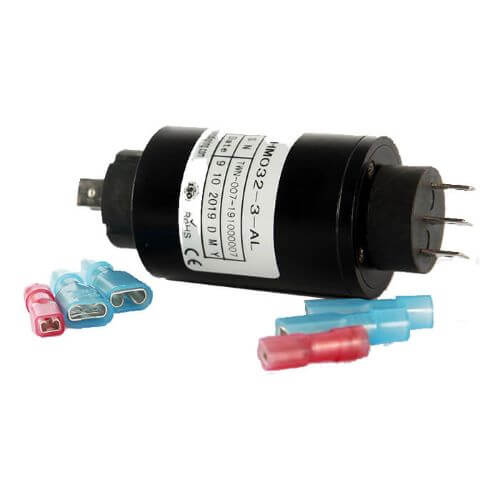Most people don’t think about the importance of slip ring connectors until they need one. Slip rings are small, cylindrical connectors that allow power, data, and other signals to pass uninterrupted through a rotating joint. They are often found in industrial machinery, robotics, robotics, and other applications that require 360-degree motion. While they are relatively simple and straightforward, there are many considerations to take into account when selecting and designing slip rings. This guide aims to help you understand the basics and how to go about selecting and designing the right one for your application.
- What Are Slip Ring Connectors?
- Types of Slip Ring Connectors
- How to Select the Right Slip Ring Connector?
- How to Design a Slip Ring Connector?
- How To Make A Slip Ring Power Connector?
- The Bottom Line
What Are Slip Ring Connectors?
A slip ring connector is a mechanical component that allows for the uninterrupted flow of electrical power and/or data signals through a rotating joint. They consist of a stationary contact (which is usually a metal sleeve) and a rotating contact (the slip ring itself). As the slip ring rotates, the contacts maintain contact with each other, ensuring uninterrupted power flow and/or data transmission. Slip rings can also be used to transfer high-frequency signals, such as those used in communications systems.
Types of Slip Ring Connectors
These connectors come in a variety of shapes and sizes to fit different application needs. The most common types are:
• DIY Slip Ring Connectors: These are typically small and easy to assemble, making them ideal for DIY projects and hobbyists.
• Slip Ring Power Connectors: These are designed to transfer power through a rotating joint. The most common types are DC power connectors and AC power connectors.
• Miniature Slip Ring Connector: These are designed to be small and lightweight, making them ideal for applications that require minimal space and weight.
• Small Slip Ring Connector: These are designed to transfer small amounts of power or data through a rotating joint. They are typically used in applications such as medical equipment and robotics.
How to Select the Right Slip Ring Connector?
When selecting a connector, there are several factors to consider. First and foremost, you need to consider the size, shape, and type of connector that best fits your application’s needs. You should also consider the maximum current and voltage requirements, as well as the number of circuits needed. Additionally, if your application requires high-frequency signal transmission, you’ll need to select a connector with appropriate signal transmission capabilities.
How to Design a Slip Ring Connector?
When designing, it’s important to consider the mechanical requirements of the application. The slip ring needs to fit the rotational speed and other mechanical requirements of the application. It’s also important to consider the electrical requirements of the application, such as the maximum current and voltage. Additionally, if the application requires high-frequency signal transmission, you’ll need to design a connector with appropriate signal transmission capabilities.
How To Make A Slip Ring Power Connector?
A slip ring power connector is a device used to transfer power between two rotating items, such as a motor and a generator. These connectors are used in a variety of applications, including industrial, automotive, and medical. They provide a reliable, efficient, and cost-effective way to transfer power between two rotating parts. In this article, we’ll explain how to make a slip ring power connector.
Step 1: Gather Materials
The first step in making a power connector is to gather the proper materials. You’ll need a slip ring, which is a cylindrical piece of metal with a hole in the center. You’ll also need a connector, which is an electrical connector that can be used to attach the slip ring to the power source. Additionally, you’ll need a set of contacts, which are metal pins that will connect the slip ring to the power source. Finally, you’ll need a set of electrical wires, which will provide the electrical connection between the connector and the power source.
Step 2: Assemble the Slip Ring
Once you have all the necessary materials, the next step is to assemble the slip ring. First, place the connector in the center of the slip ring. Make sure that the contacts are facing outward. Then, carefully insert the contacts into the slip ring, making sure that they are securely fastened. Finally, connect the wires to the contacts.
Step 3: Connect the Power Source
The final step is to connect the slip ring to the power source. Depending on the application, this will differ, but generally, it involves connecting the wires to the power source and then tightening the screws on the connector.
Once this is done, the power connector is ready to use. You can now transfer power between two rotating items safely and efficiently.
The Bottom Line
Slip ring connectors are essential components for applications that require 360-degree motion. Selecting and designing the right connector for the job requires careful consideration of the application’s mechanical and electrical requirements. With the right slip ring connector, you’ll be able to ensure uninterrupted power flow and/or data transmission.
If you’re looking for a reliable and affordable connector, the Grand Slip Ring is a perfect choice. We offer a wide selection of connectors and related components, including DIY connectors, slip ring power connectors, miniature connectors, and more. Our experienced team can help you find the right connector for your application, and our products are designed to provide superior performance and reliability. Contact us today to learn more!
See What We Can Do

